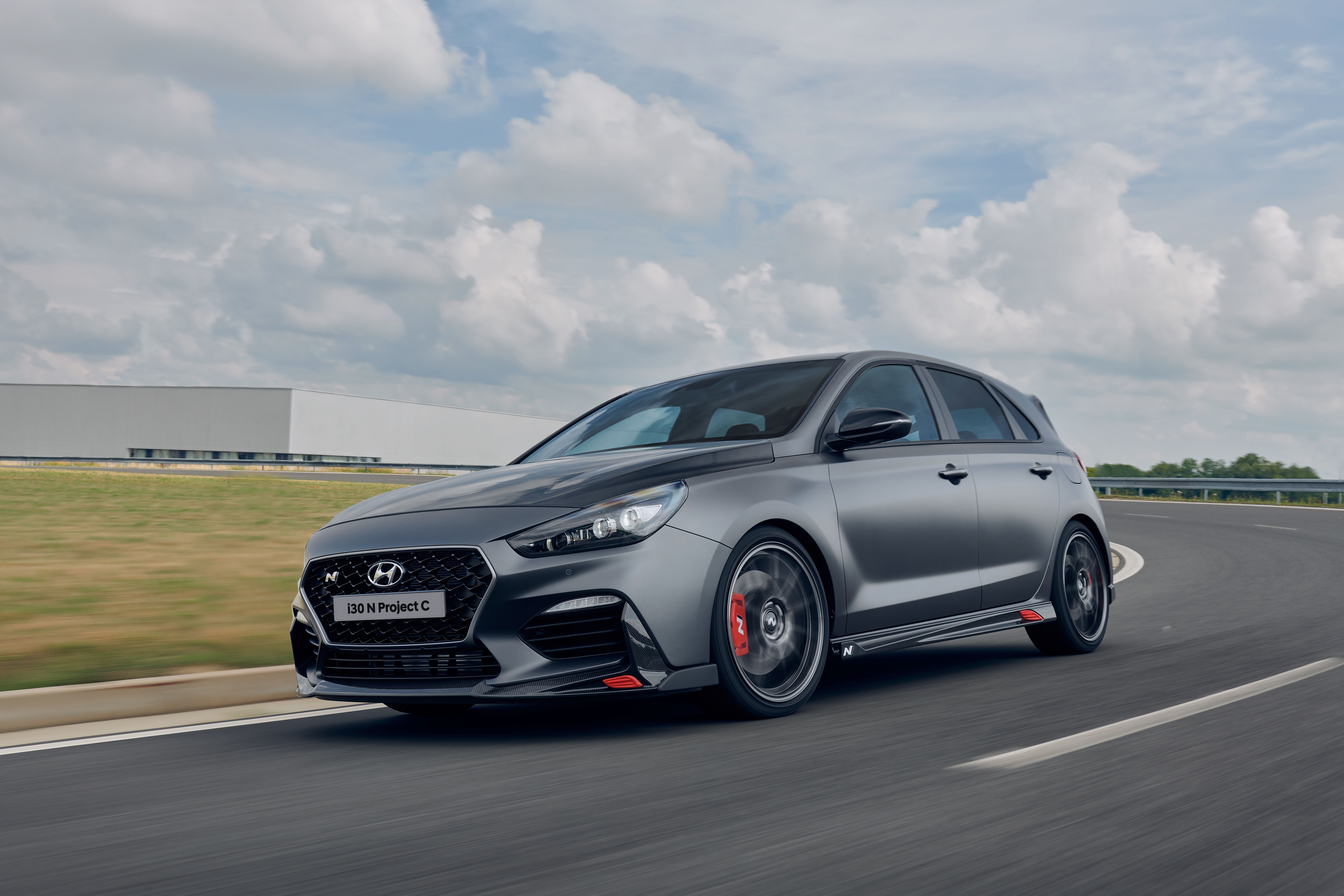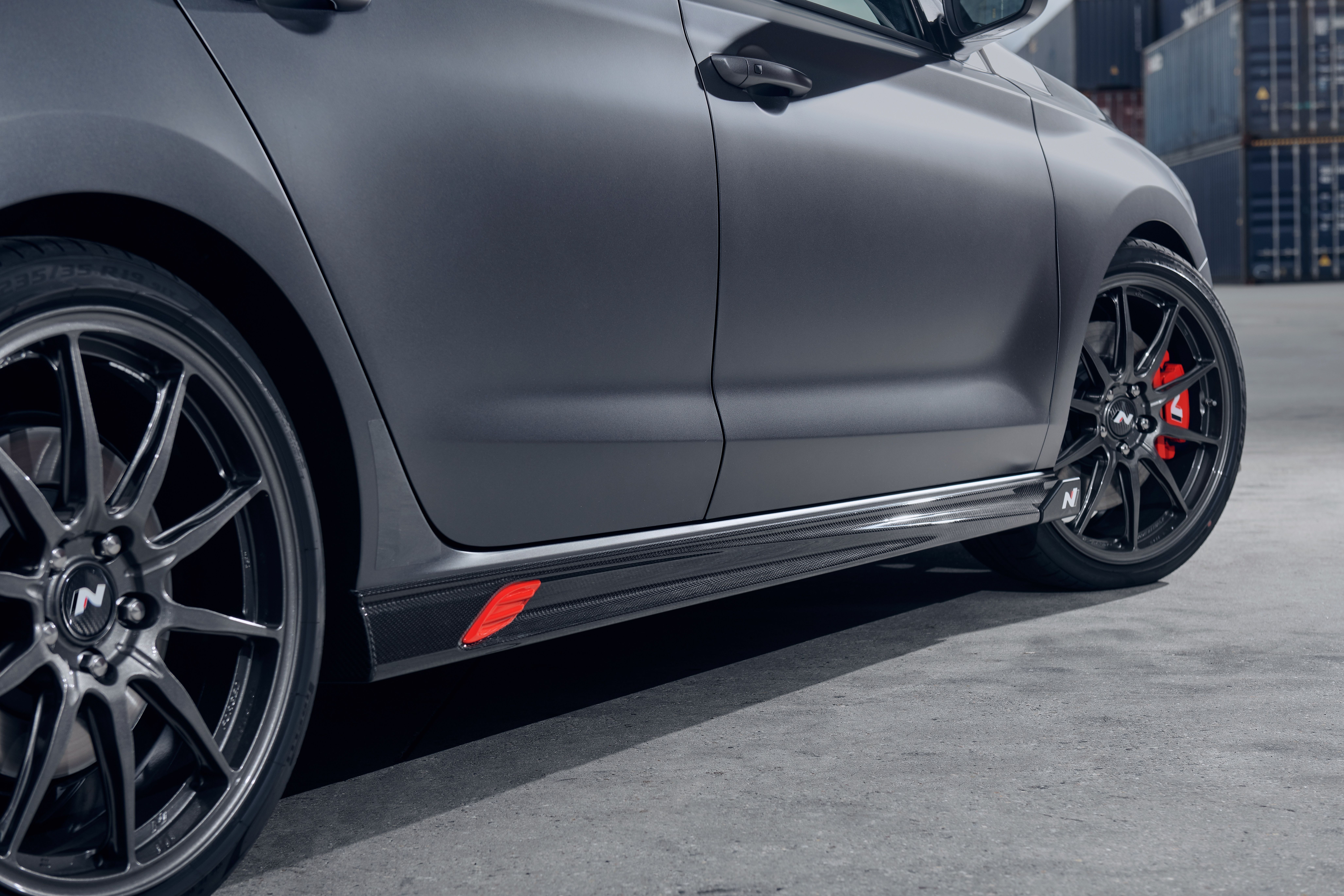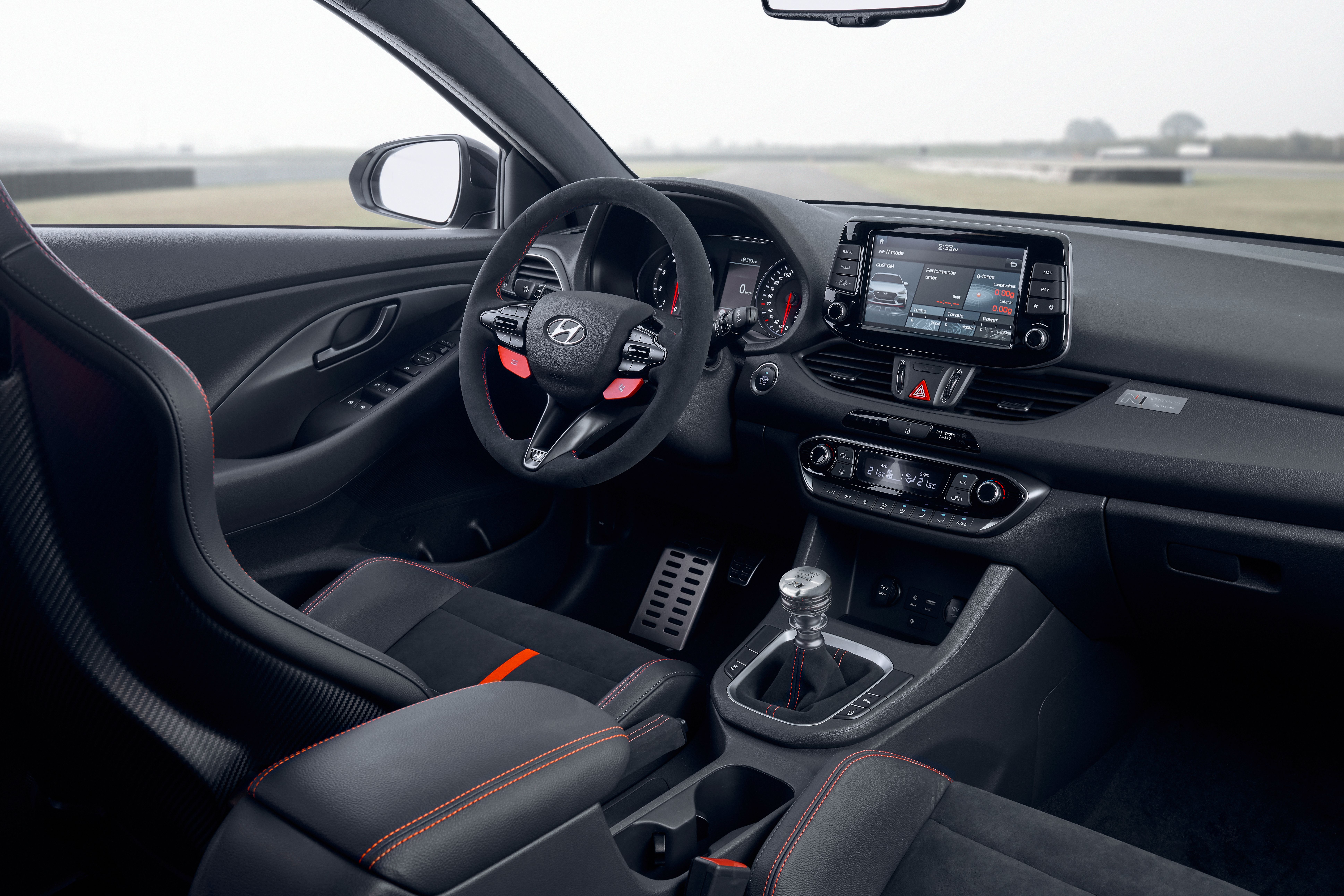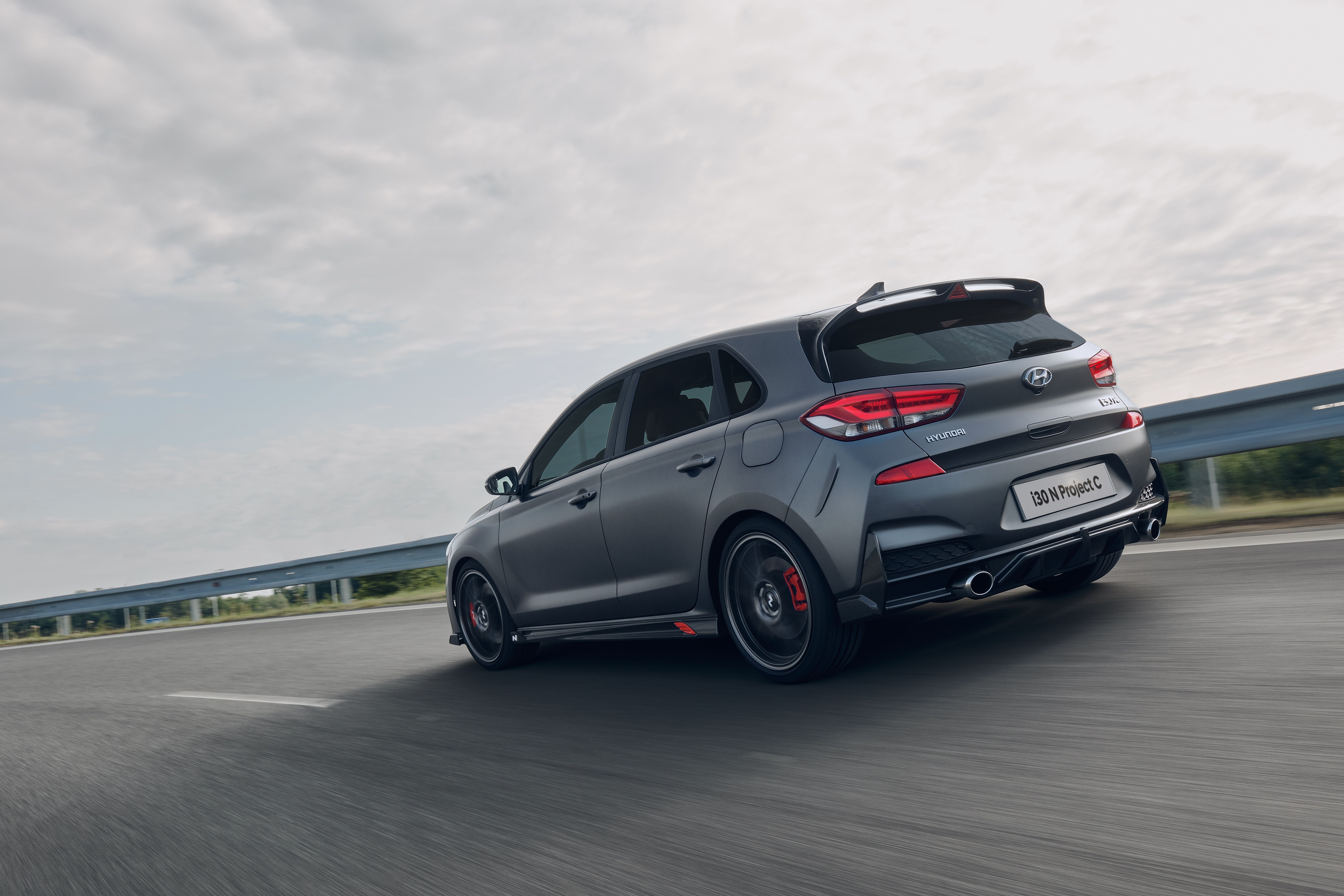Car enthusiasts can’t help but feel... enthusiastic whenever an automaker reveals a hardcore hot hatchback that epitomizes a good model already on offer. Such is the case with the 2020 Hyundai i30 N Project C, which is the quickest and most aggressive i30 N variant - it was just revealed at the 2019 Frankfurt Motor Show where it will undoubtedly attract a lot of hot hatch fans’ attention.
What sets the Hyundai i30 N Project C apart from the regular i30 N?
|
|
ids=861019,861020 |
no_overlay=false |
before_label=2020 Hyundai i30 N Project C |
after_label=2019 Hyundai i30 N> |
Let’s get this out of the way first: the Hyundai i30 N Project C doesn’t get any additional power over the i30 N Performance. That means its 2.0-liter four-cylinder four-pot (that is really rather characterful, as it whooshes, pops and bangs away out the back when you thrash it) has 273 horsepower (275 PS) at 6,000 rpm and 353 Nm (260 pound-feet) of torque between 1,450 and 4,700 rpm - torque does go up for brief periods of hard acceleration, thanks to the overboost function that pushes the torque to 378 Nm (278 pound-feet); the gearbox is the same six-speed manual, too.
2020 Hyundai i30 N Project C specifications
|
Engine |
THETA 2.0 T-GDI, 16-valve MLA, DOHC E-CVVT |
|---|---|
|
Capacity |
1998 cc |
|
Bore x stroke |
86.0 x 86.0 mm |
|
Compression ratio |
9.5 |
|
Power |
275 PS (202 kW) @ 6000 rpm |
|
Torque |
353 Nm @ 1450 ~ 4700 rpm 378 Nm with Overboost Function @ 1750-4200rpm |
|
Turbocharger boost pressure |
2.3 bar max |
|
Maximum speed (km/h) |
250 |
|
0-100 km/h (seconds) |
6.0 |
|
CO2 combined (g/km NEDC 2.0 target)* |
176* |
|
Fuel Consumption urban/extra urban/combined (l/100 km)* |
5.7/9.7/7.1 |
Hyundai says just the wheels alone make the car 22 kg (48.5 pounds) lighter. Next up is the CFRP hood that saves 7.2 kg (15.9 pounds), then the side sills that together shed 1 kg (2.2 pounds), then the integrated diffuser in the back that reduces the weight by another 386 grams (0.86 pounds). The final sources of weight saving are the two front seats that together help shed 15 kg (33 pounds) and the rear wheel hubs that on the Project C are made out of aluminum and they make the car 4.66 kg (10 pound) lighter still.
Finally, the car’s ride has been lowered by 6 mm and the steering has different (more aggressive) calibration compared to other i30 Ns. Hyundai points out that by lowering the suspension and reducing some weight higher in the car (through the use of the CFRP hood), the car’s center of gravity is actually 8.8 mm (0.35 inches) lower than that of the standard i30 N Performance.
How many i30 N Project Cs is Hyundai making and when can I have one?
If you’re a fan of hot hatches and are right now looking to buy a new car, then the Hyundai i30 N Project C should be on your radar. And not only because it is a limited edition model that has genuine performance, but because it’s probably going to be a future classic at some point - think about it: it’s the hardcore version of Hyundai’s first ever hot hatchback, a model that was already good prior to the appearance of this new hardcore variant.
If you want to check out the car in the metal (and CFRP), you can see it at Hyundai’s Frankfurt Motor Show stand right now. The Korean automaker’s stand is also home this year to the sporty looking i10 N-Line, as well as a the 45 all-electric concept; the latter looks very Pininfarina-esque, even though it was designed in-house by Hyundai - if it’s a sign of the brand’s future design direction, then we’re very eager to see what they have in store.
What other hardcore hot hatches does the Hyundai i30 N Project C square up against?
Hyundai didn’t get the idea of making a hardcore version of the i30 N necessarily on its own, because other manufacturers have been doing it for decades. Right now, for instance, Renault will sell you the Megane RS either as the more-extreme-than-normal Trophy model, or the stripped out track day special that is the Trophy-R.
Volkswagen will also sell you its iconic Golf GTI as the Clubsport or Clubsport S. The latter is the most extreme and powerful front-wheel drive Golf ever and it is a very different beast compared to the regular Golf GTI. Around a dry track, the Clubsport S should be faster than the grippier, all-wheel drive Golf R.
Honda doesn’t necessarily need to make a more hardcore version of its current Civic Type-R, because even as it is right now, it’s still quite extreme (both to look at and to drive), so even if it’s not the more track-focused version of a more tame hot hatch, it’s worth mentioning in this hardcore model roundup.
Interestingly, while there is talk of an even more extreme version of the current hot Civic, it is believed Honda will introduce a more toned down version of it along with its mid-life cycle refresh - this confirms the theory that the Civic Type R is already a hardcore hot hatch, even if it’s not specifically branded as such.
Further reading
Read our full review on the 2018 Hyundai i30 N.
Read our full review on the 2019 Hyundai i30 N Fastback.






